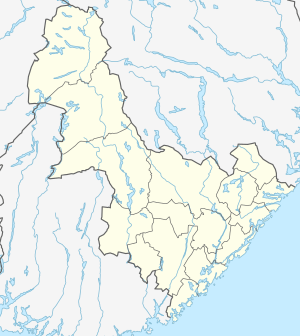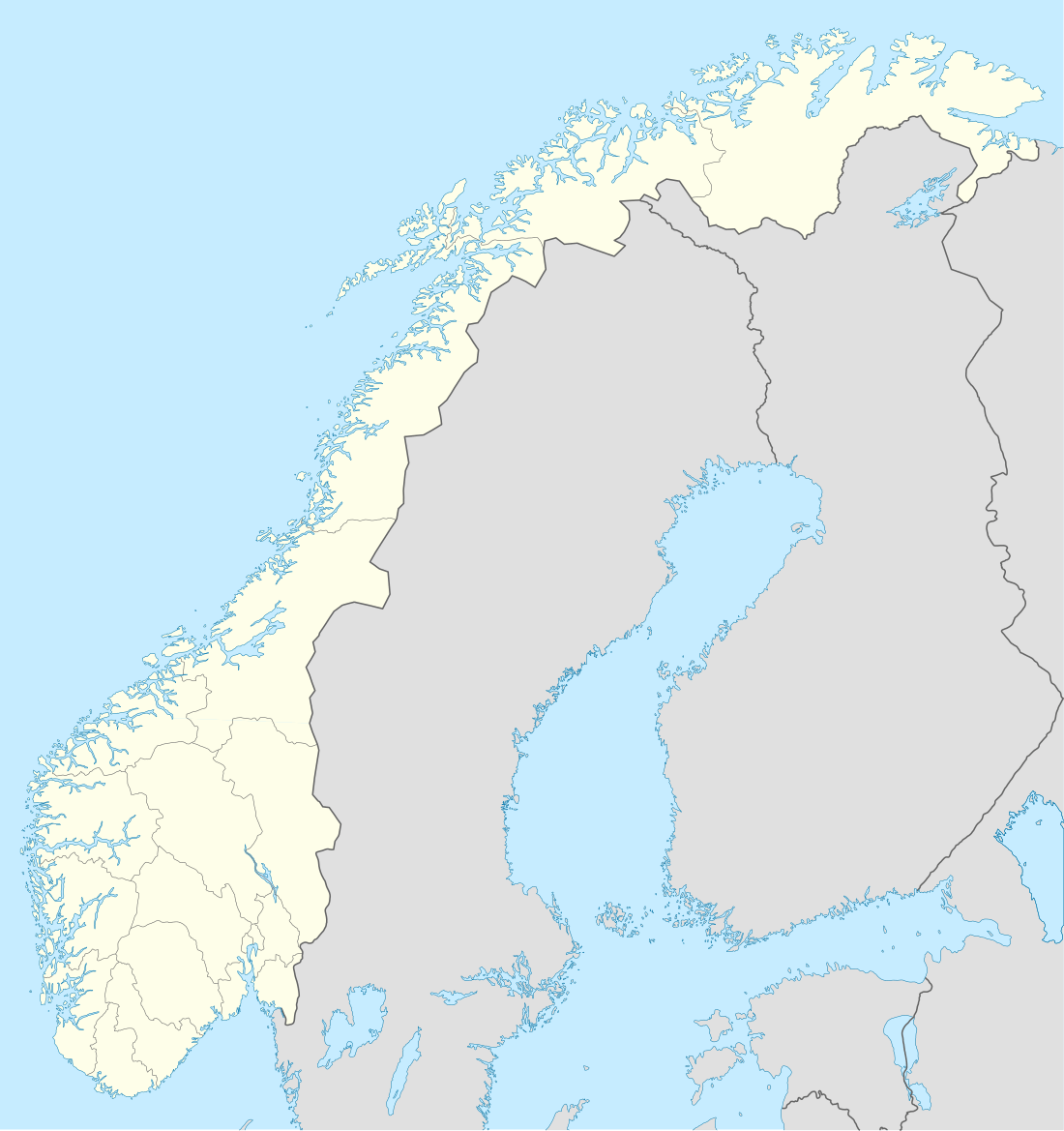Moland
Moland is a former municipality in Aust-Agder county, Norway. The 127-square-kilometre (49 sq mi) municipality existed from 1962 until 1992 when it was merged into the present-day municipality of Arendal. The administrative centre of the municipality was the village of Eydehavn which had a population of 6,011 in 1967 and 8,148 in 1992. Other villages in the municipality included Kilsund, Narestø, Saltrød, Brekka, Strengereid, Vatnebu, and Sagene. The municipality consisted of the mainland area to the north and northeast of the town of Arendal plus the islands of Flostaøya and Tverrdalsøya.[1]
Moland kommune | |
|---|---|
 Coat of arms | |
 Moland kommune Location of the municipality  Moland kommune Moland kommune (Norway) | |
| Coordinates: 58°32′52″N 08°48′40″E | |
| Country | Norway |
| Region | Southern Norway |
| County | Aust-Agder |
| District | Østre Agder |
| Municipality ID | NO-0918 |
| Adm. Center | Eydehavn |
| Area | |
| • Total | 127 km2 (49 sq mi) |
| Time zone | UTC+01:00 (CET) |
| • Summer (DST) | UTC+02:00 (CEST) |
| Created from | Strengereid, Stokken, Austre Moland, and Flosta in 1962 |
| Merged into | Arendal in 1992 |
History

During the 1960s, there were many municipal mergers across Norway due to the work of the Schei Committee. The municipality of Moland was created on 1 January 1962 when a merger took place between the municipalities of Stokken (population: 2,783), Austre Moland (population: 1,607), and Flosta (population: 1,205) as well as Strengereid area (population: 375) of the municipality of Tvedestrand. On 1 January 1964, the Holte farm (population: 5) in Moland was transferred to Tvedestrand.
On 1 January 1992, another major municipality merger took place in this area. The municipalities of Moland (population: 8,148), Øyestad (population: 8,679), Tromøy (population: 4,711), and Hisøy (population: 4,026) were merged with the town of Arendal (population: 12,478) to form the new, much larger, municipality of Arendal with a population of nearly 40,000 people.[2]
Name
The municipality was named Moland, by dropping the word Austre (meaning "eastern") from the old name of one of its predecessor municipalities: Austre Moland. The name Moland comes from the Old Norse word Móðguland which is derived from the river name Móðga, which can be linked with the Old Norse word móðigr which means "brave".[3]
Coat-of-arms
The coat-of-arms is from modern times; they were granted on 7 January 1983. The blue and white arms show a large, white letter "M" on a blue background. The colour represents the sea since the municipality has a long and rugged coastline, symbolized by the letter "M", the initial of the municipality. The three points in the "M" also refer to the three areas that formed Moland municipality: Stokken, Flosta, and Austre Moland.[4]
Notable residents
- Tore A. Liltved, a local politician
- Thor Lund, a local politician and mechanic
References
- Thorsnæs, Geir, ed. (2016-01-14). "Moland". Store norske leksikon (in Norwegian). Kunnskapsforlaget. Retrieved 2017-11-27.
- Jukvam, Dag (1999). "Historisk oversikt over endringer i kommune- og fylkesinndelingen" (PDF) (in Norwegian). Statistisk sentralbyrå. Cite journal requires
|journal=(help) - Rygh, Oluf (1905). Norske gaardnavne: Nedenes amt (in Norwegian) (8 ed.). Kristiania, Norge: W. C. Fabritius & sønners bogtrikkeri. p. 87.
- "Civic heraldry of Norway - Norske Kommunevåpen". Heraldry of the World. Retrieved 2017-11-28.
External links
